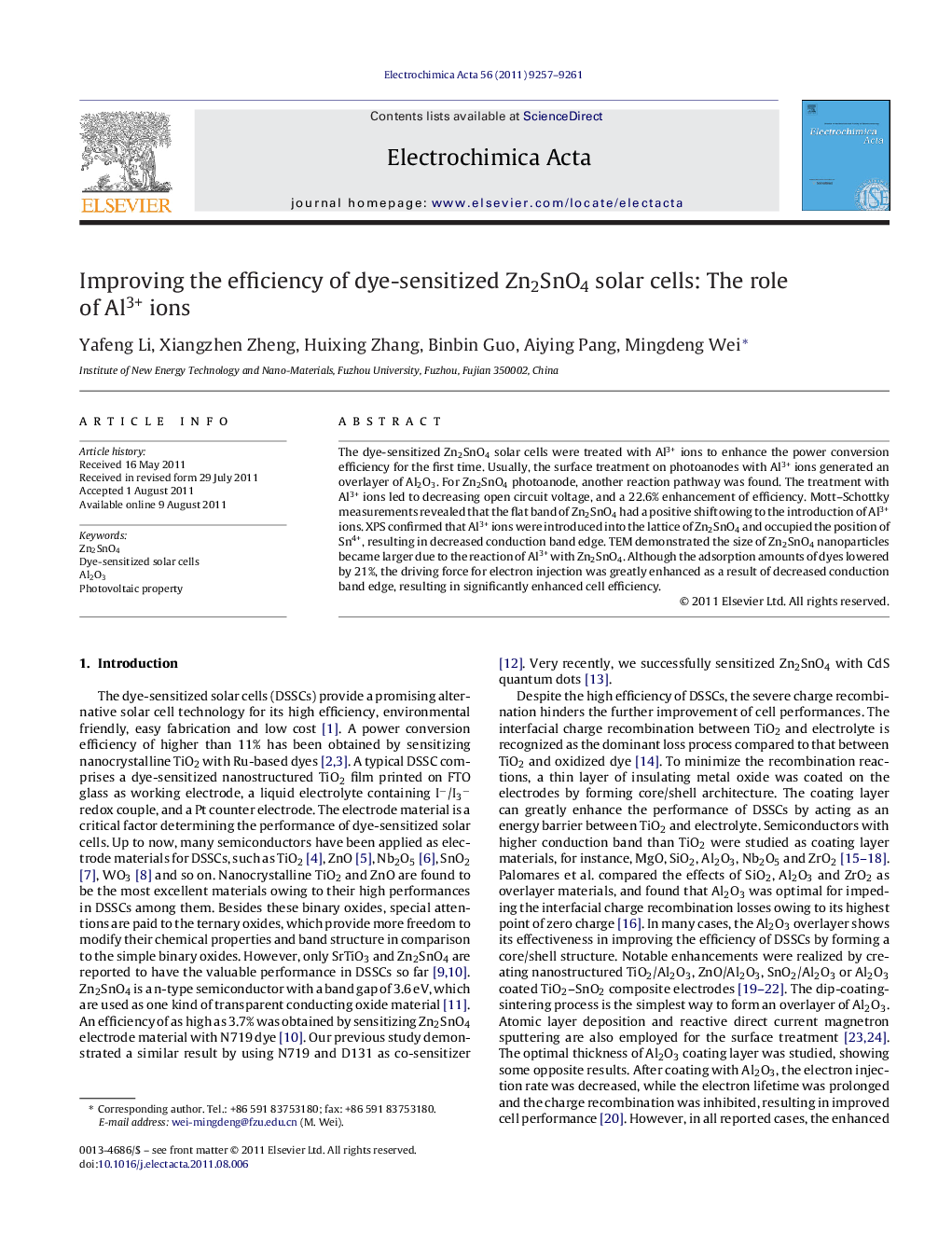| Article ID | Journal | Published Year | Pages | File Type |
|---|---|---|---|---|
| 189425 | Electrochimica Acta | 2011 | 5 Pages |
The dye-sensitized Zn2SnO4 solar cells were treated with Al3+ ions to enhance the power conversion efficiency for the first time. Usually, the surface treatment on photoanodes with Al3+ ions generated an overlayer of Al2O3. For Zn2SnO4 photoanode, another reaction pathway was found. The treatment with Al3+ ions led to decreasing open circuit voltage, and a 22.6% enhancement of efficiency. Mott–Schottky measurements revealed that the flat band of Zn2SnO4 had a positive shift owing to the introduction of Al3+ ions. XPS confirmed that Al3+ ions were introduced into the lattice of Zn2SnO4 and occupied the position of Sn4+, resulting in decreased conduction band edge. TEM demonstrated the size of Zn2SnO4 nanoparticles became larger due to the reaction of Al3+ with Zn2SnO4. Although the adsorption amounts of dyes lowered by 21%, the driving force for electron injection was greatly enhanced as a result of decreased conduction band edge, resulting in significantly enhanced cell efficiency.
► The power conversion efficiency of dye-sensitized Zn2SnO4 solar cells was enhanced by the surface treatment of Al3+ ions for the first time. ► The treatment with Al3+ ions led to decreasing open circuit voltage, and an 18.5% enhancement of efficiency. ► Al3+ ions were introduced into the lattice of Zn2SnO4 and occupied the position of Sn4+, resulting in decreased conduction band edge of Zn2SnO4. ► The driving force for electron injection was greatly enhanced as a result of decreased conduction band edge.
